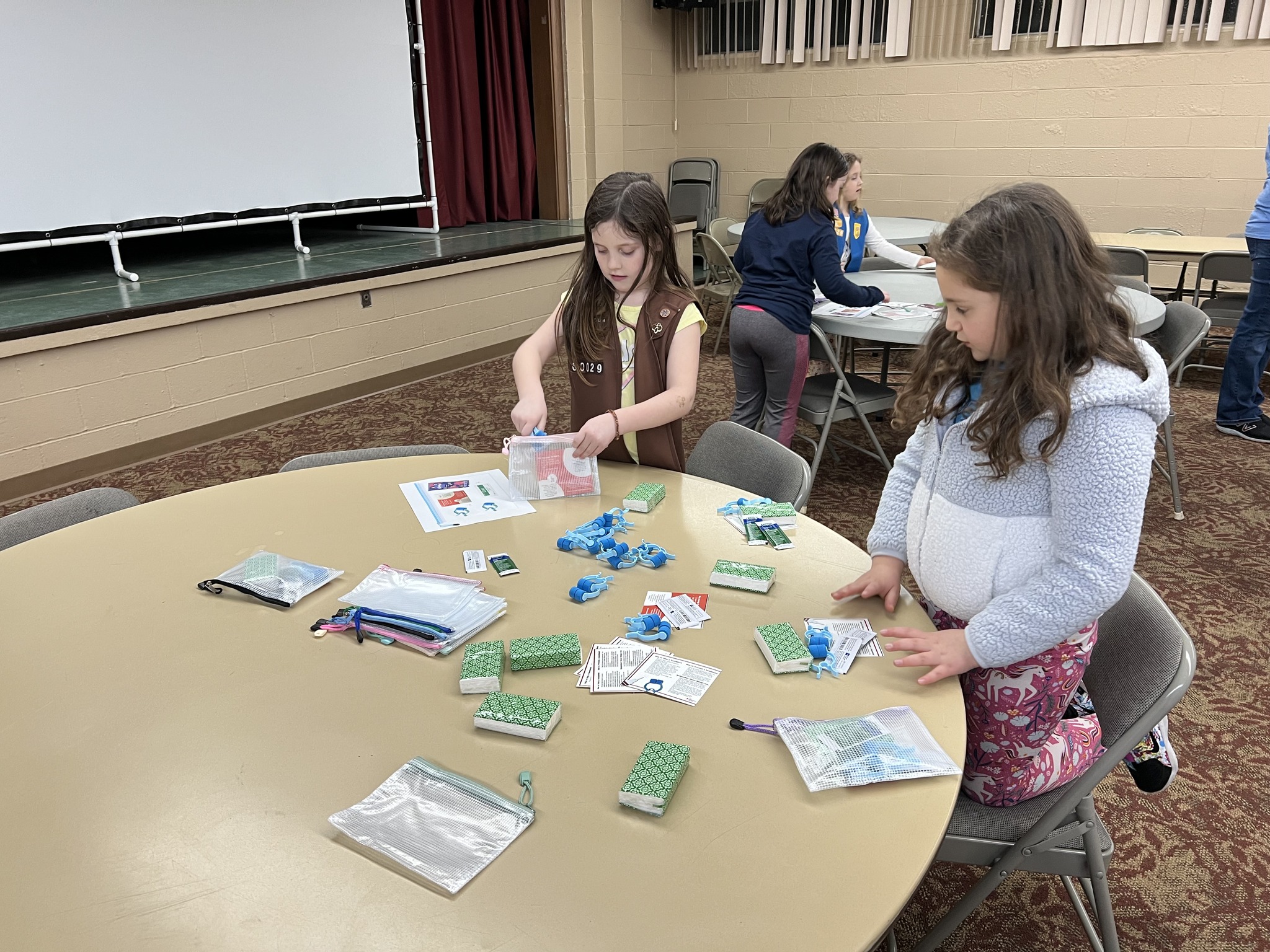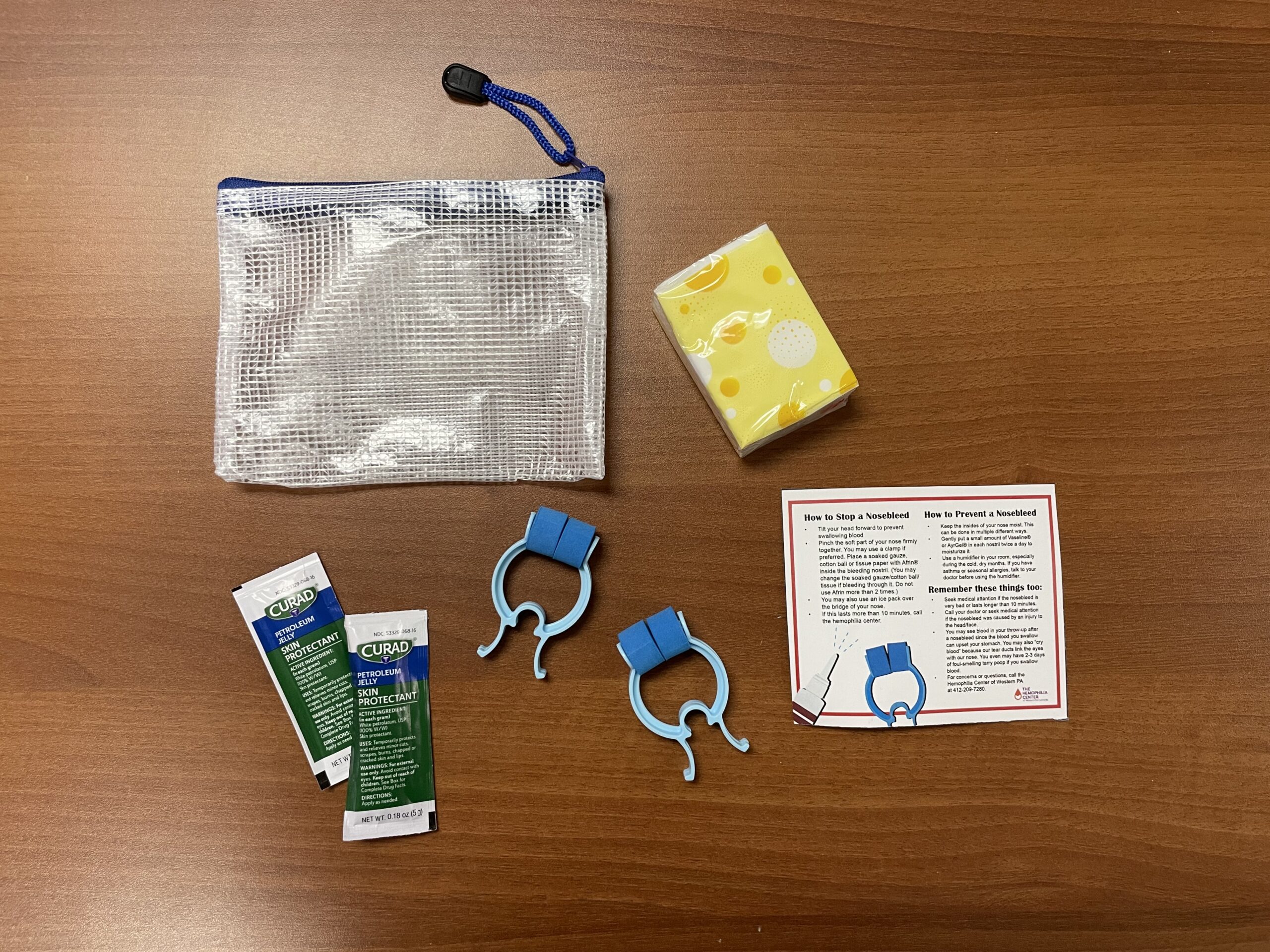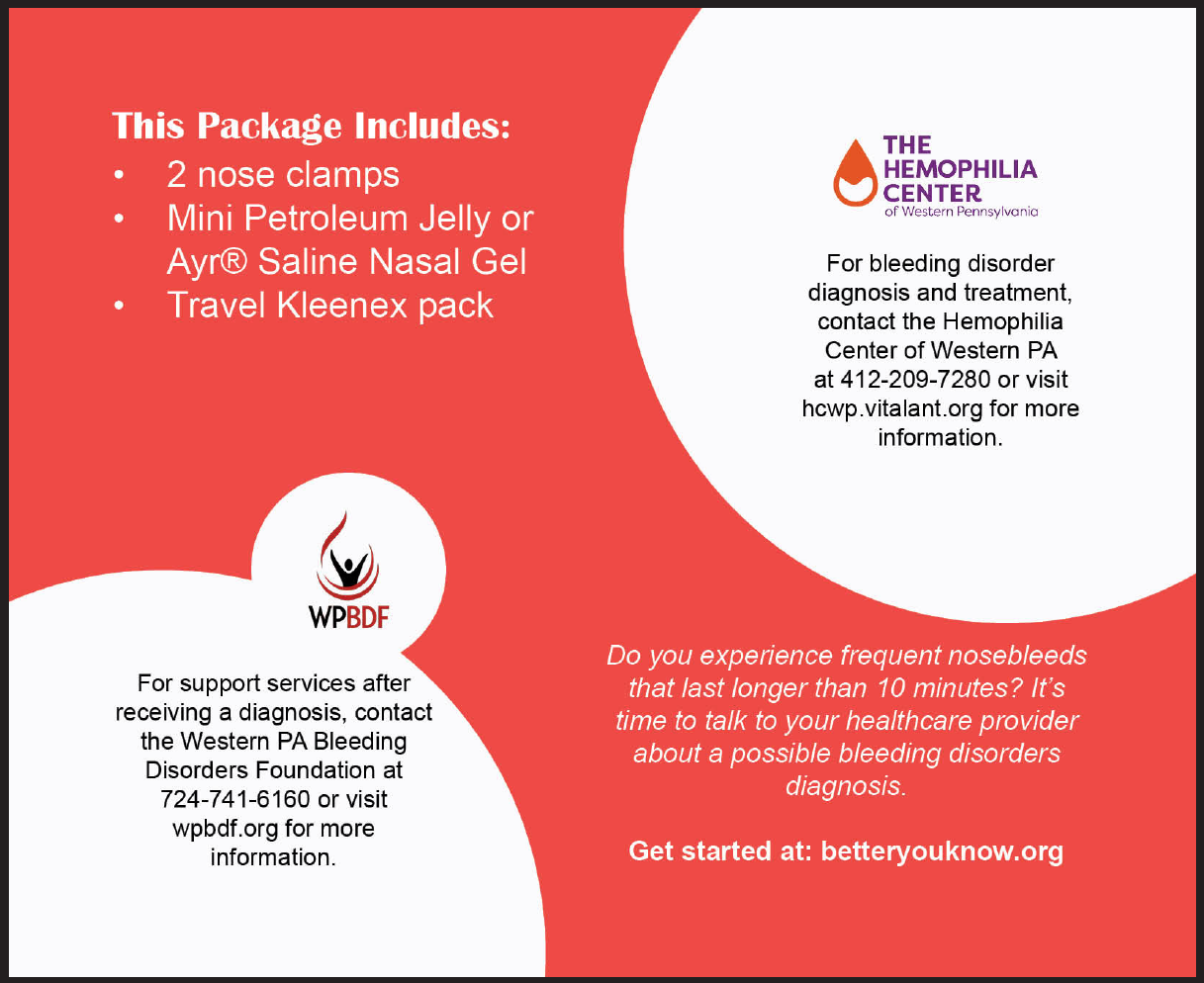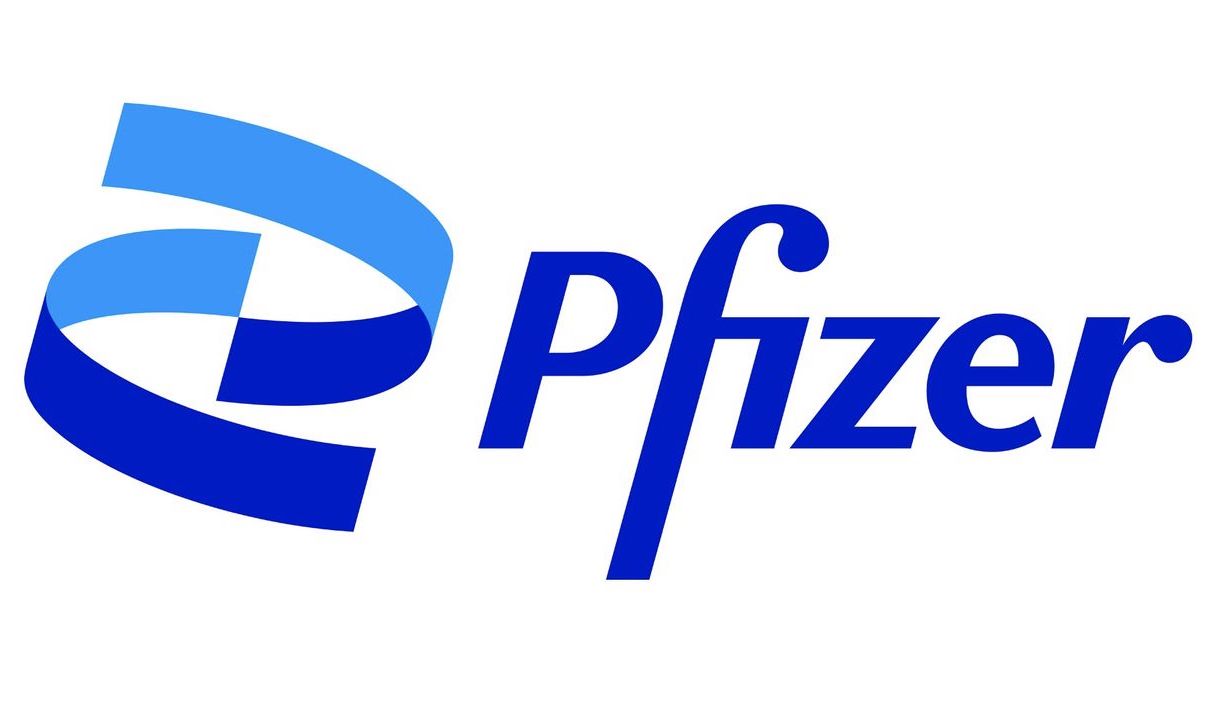Nosebleed Kit Program
According to the CDC, up to 1 in 100 people have a bleeding disorder. Many are undiagnosed and lack proper treatment. Do you experience frequent and heavy nosebleeds that last longer than 10 minutes? It's time to talk to your healthcare provider about a possible bleeding disorder diagnosis. Visit betteryouknow.org to get started.
We want to do all we can to increase early detection of bleeding disorders, and we can start right here in Western Pennsylvania. School nurses play a pivotal role in ensuring the health and safety of students. They are often the first point of contact for students experiencing health-related issues during school hours. Equipping them with educational resources on bleeding disorders and nosebleed kits will empower them to provide immediate care and attention to students experiencing nosebleeds, potentially leading to the early detection of bleeding disorders.
Nosebleed Kit Program
The Western Pennsylvania Bleeding Disorders Foundations’ Nosebleed Kit Program is aimed at increasing awareness, improving diagnosis, and enhancing the quality of life for individuals living with bleeding disorders. Our outreach program consists of the following:
- Creating and distributing nosebleed kits to school nurses throughout the 26 counties of Western Pennsylvania
- Displaying at local health and community events to distribute nosebleed kits and build connections with school nurses
- Providing bleeding disorders literature and resources to school nurses to enhance their understanding and improve the quality of care to at risk students


Nosebleed Kit Contents
Our Nosebleed Kits include:
- Two (2) nose clamps
- Mini Petroleum Jelly
- Travel tissue pack
- Carrying bag
- Information card with tips to stop and prevent nosebleeds, plus the contact information for the Hemophilia Center of Western Pennsylvania and the Western Pennsylvania Bleeding Disorders Foundation.
Requesting Nosebleed Kits
Are you a school nurse looking to request nosebleed kits for your school? Please send an email to Kara Dornish, kara@wpbdf.org, with:
- Your name
- School district name
- Shipping address
- Contact phone number


Thank You!
Thank you to Pfizer for supporting this important program.
Visit hemophiliavillage.com to discover more about hemophilia, how to connect with others, and what financial support may be available to you. To connect with your Pfizer Patient Affairs Liaison, visit: togetherforrare.com.
Nosebleeds FAQ
Are nosebleeds serious?
Bleeding from the nose — also called epistaxis — can be a common site of blood loss, especially in people with bleeding disorders. In fact, frequent and difficult-to-stop nosebleeds are a typical reason people are initially referred to a hematologist. Nosebleeds can be minor nuisances or major events that require medical attention in the hospital or emergency room.
Why do nosebleeds seem to happen so easily?
Nasal cavities are lined with a mucous membrane, which is filled with blood vessels. When the membrane is injured or broken, nosebleeds result. Blood leaks from these broken vessels into the nasal cavity and out of the nostrils, or sometimes down the back of the throat.
What are some of the factors that can contribute to nosebleeds?
A variety of factors can increase your risk of getting a nosebleed. These factors can be present alone or in combination. They may be avoided or treated to decrease the likelihood of nosebleeds recurring or requiring more serious treatment. Some of the more common risk factors include:
- Trauma or injury
- Nose picking or forceful nose blowing
- Dry air, especially in winter
- Hot air, such as in hot tubs, saunas and steam rooms
- Smoke
- Genetic risk factors*
- Infections
- Allergies, including environmental triggers
- Medications
- Low platelet count (thrombocytopenia)
- Advanced liver disease (low levels of liver-dependent clotting factors)
- High blood pressure
- Swimming, especially right after a recent nosebleed or in a highly chlorinated pool
- Anatomic issues:
- Deviated septum (abnormal condition of the nose in which one side of the nose is narrower than the other, causing an obstruction of the nasal passage)
- Telangiectasias (spider veins or small dilated blood vessels near the surface of the skin)
- Thin mucosal membrane (thin lining of the body cavities including the nose)
When should someone seek medical care?
Always call your bleeding disorder treatment center or physician if you experience any of the following:
- Prolonged bleeding which does not stop with pressure or other remedies
- Nosebleeds that have lasted for several hours
- Vomiting blood or “coffee ground”-looking material
- Signs of anemia (paleness, dizziness, headaches, shortness of breath)
- Frequent small nosebleeds that stop easily but continue for weeks
What can someone do if they have frequent nosebleeds?
If you have frequent nosebleeds, you may be able to care for them yourself using a few simple steps:
- Gently blow out mucus and unstable clots through the nose
- Pinch the bridge of the nose and lean slightly forward, holding pressure for a minimum of 10 minutes, but not more than 20 minutes at a time
- Set a timer during the pressure-holding period
- Use distraction techniques or other activities while applying pressure
- Practice Universal Precautions—Protect your hands, eyes, and mouth from coming in contact with blood or other body fluids
- Time the nosebleed and record this information
- Keep fingernails short to avoid accidentally scratching the inside of the nose
- Avoid picking the nose
- Apply ice on the nose (Use a flexible ice pack or something similar, approx. 6” long x 1” wide) —and protect skin from ice burn
- Rest after stopping the nosebleed (keep cool, no swimming or outdoor sports for a few hours)
- Avoid hot foods the day of the nosebleed
How can nosebleeds be prevented?
- Use a cool mist humidifier while sleeping
- Use a saline nasal spray (e.g., Ocean Nasal Spray®) four times a day
- Use a water-soluble nosegel (e.g., Rhinaris® or Secaris®) inside the nostrils three to four times a day
- Apply Ayr Gel® (US), Bacitracin, Polysporin®, or Vaseline® to the nasal openings before going to sleep (may also apply during the day)
- Wear scarves to cover the nose in the winter
- Increase fluid intake
- Sleep in a cool room
In addition, one should avoid:
- Picking the nose, harsh blowing of the nose, and/or blowing the nose immediately after a shower
- Diving into a swimming pool
- Bending over for a long time, which puts pressure on the nose
- Inhaling secondhand smoke (in the home, car, or other enclosed places)
Be sure to remember the following:
- Seek medical attention if the nosebleed is very bad or lasts longer than 10 minutes. Call your doctor or seek medical attention if the nosebleed was caused by an injury to the head/face.
- You may see blood in your throw-up after a nosebleed since the blood you swallow can upset your stomach. You may also "cry blood" because our tear ducts link the eyes with our nose.
- You even may have 2-3 days of foul-smelling tarry poop if you swallow blood.
- For concerns or questions, call the Hemophilia Center of Western PA at 412-209-7280.
*Some bleeding disorders, such as von Willebrand disease and platelet disorders, have a higher likelihood of nosebleeds

